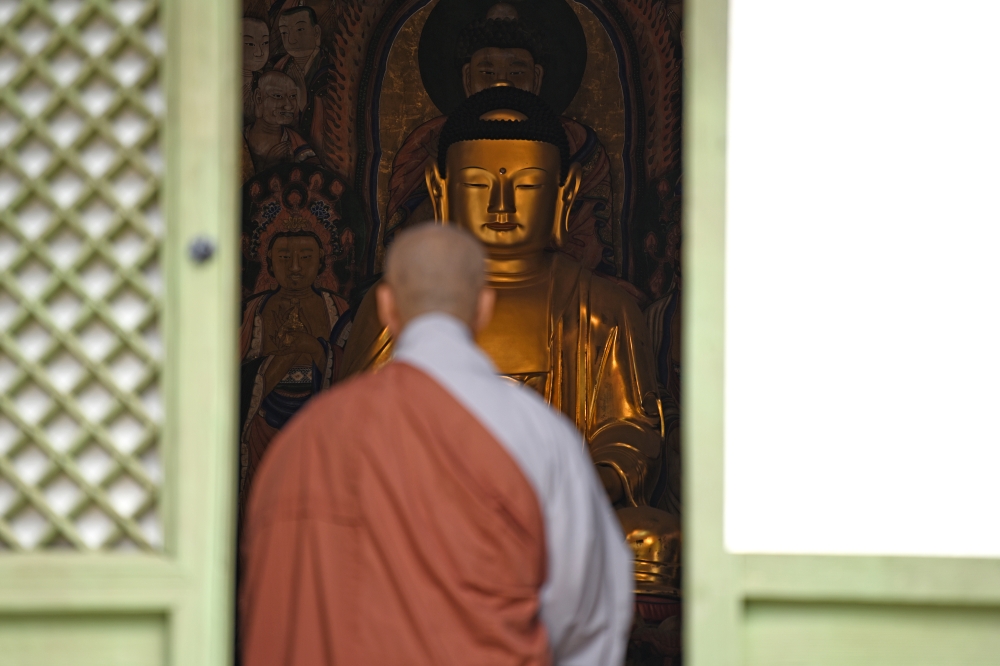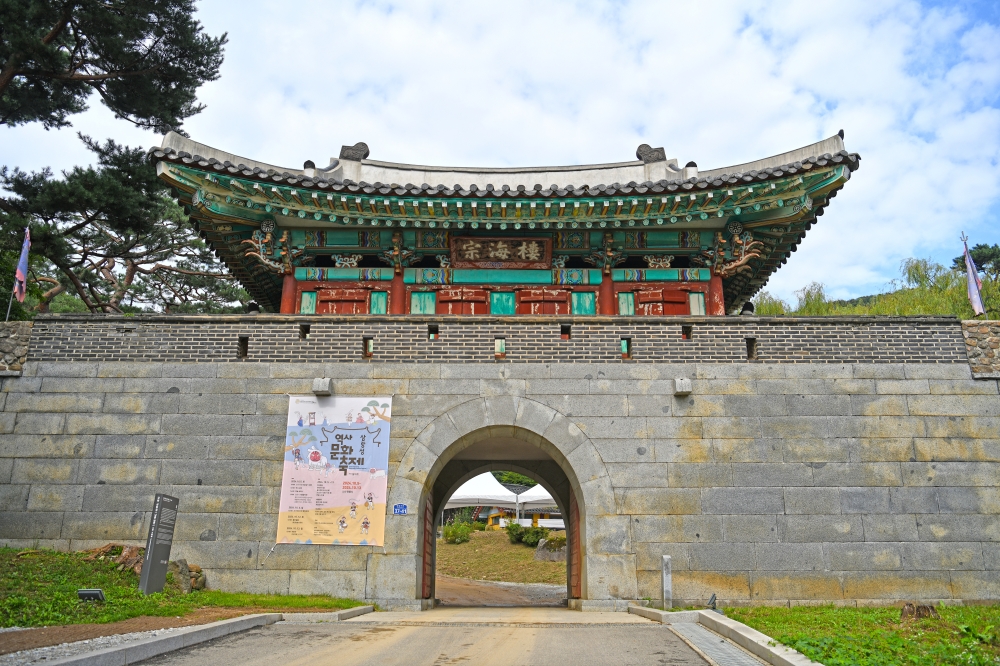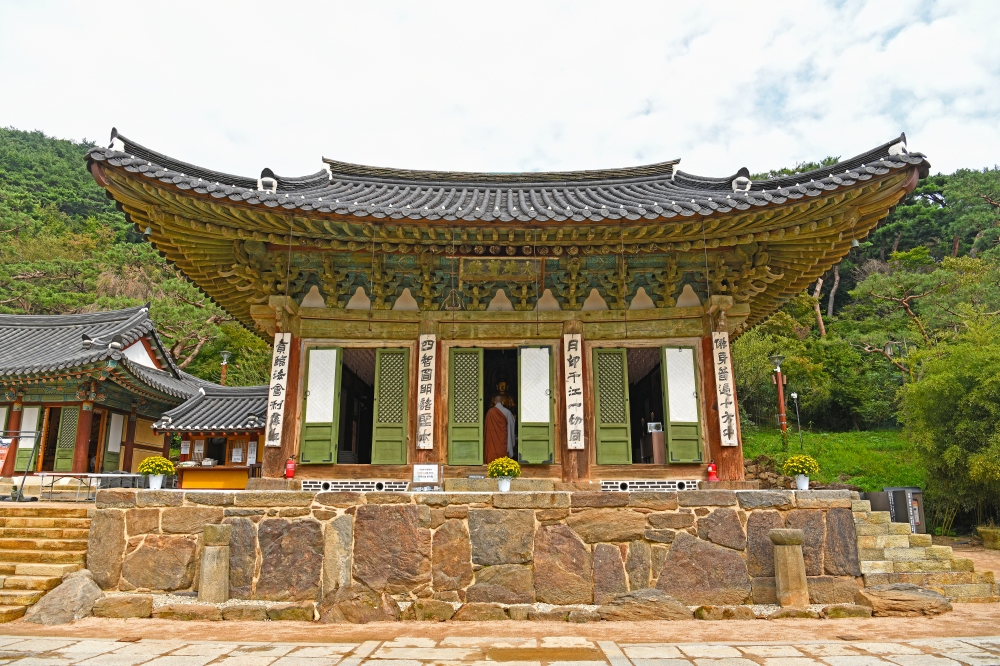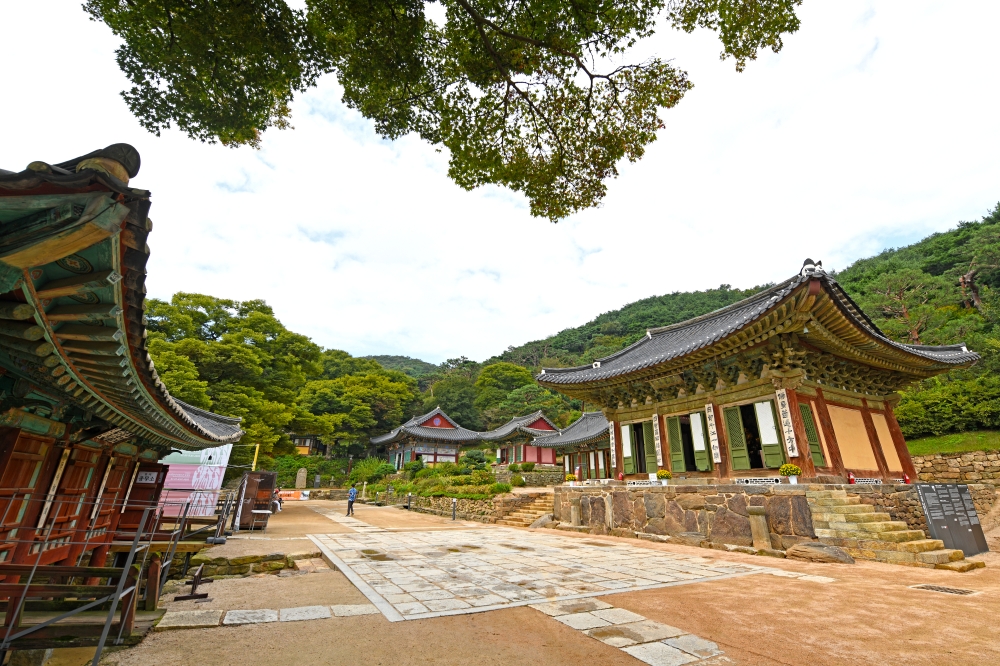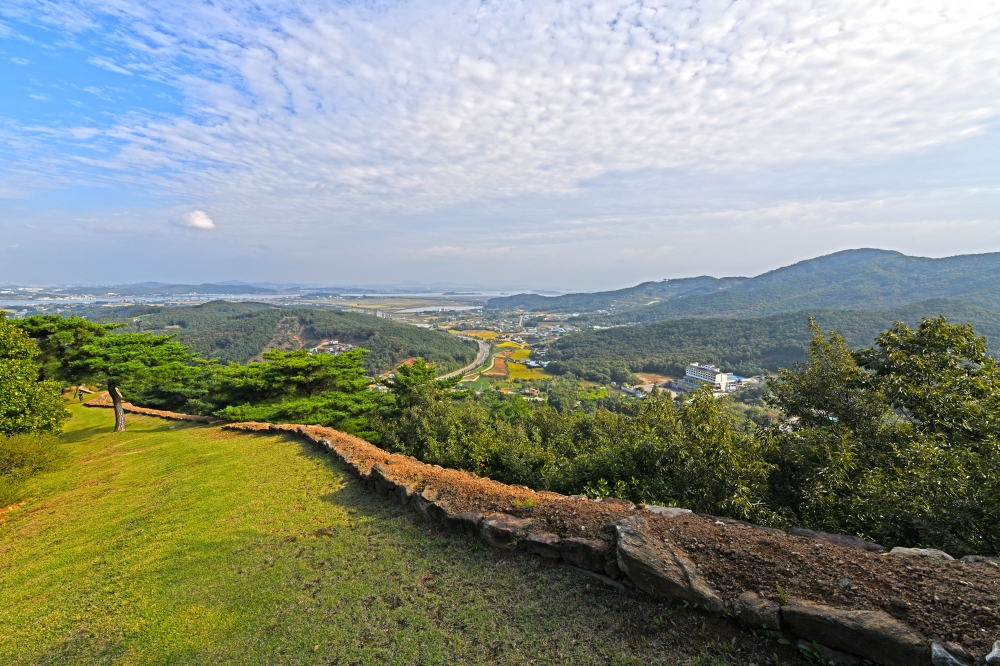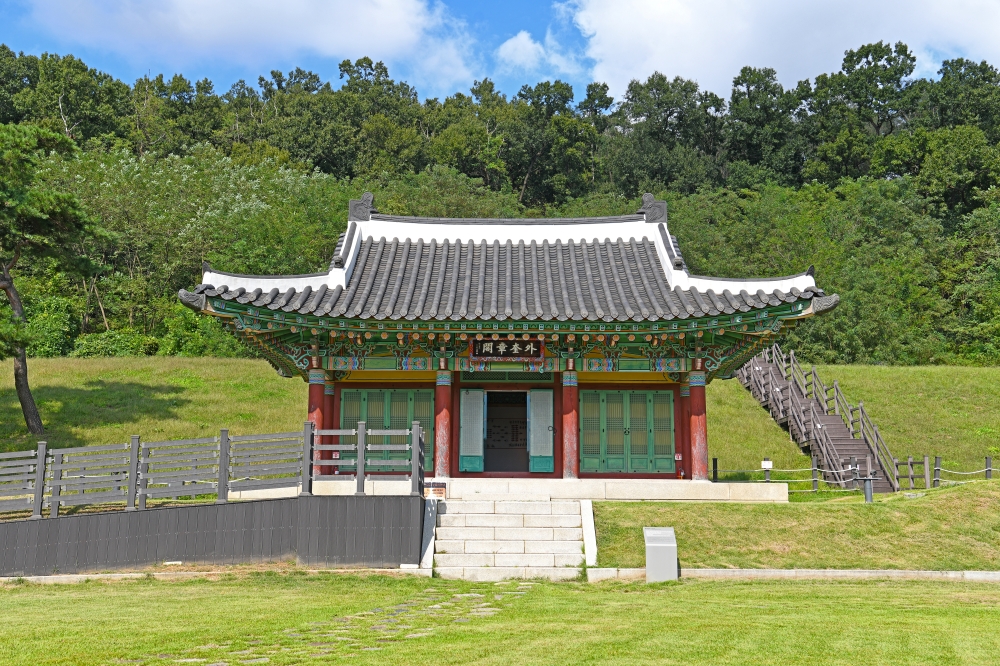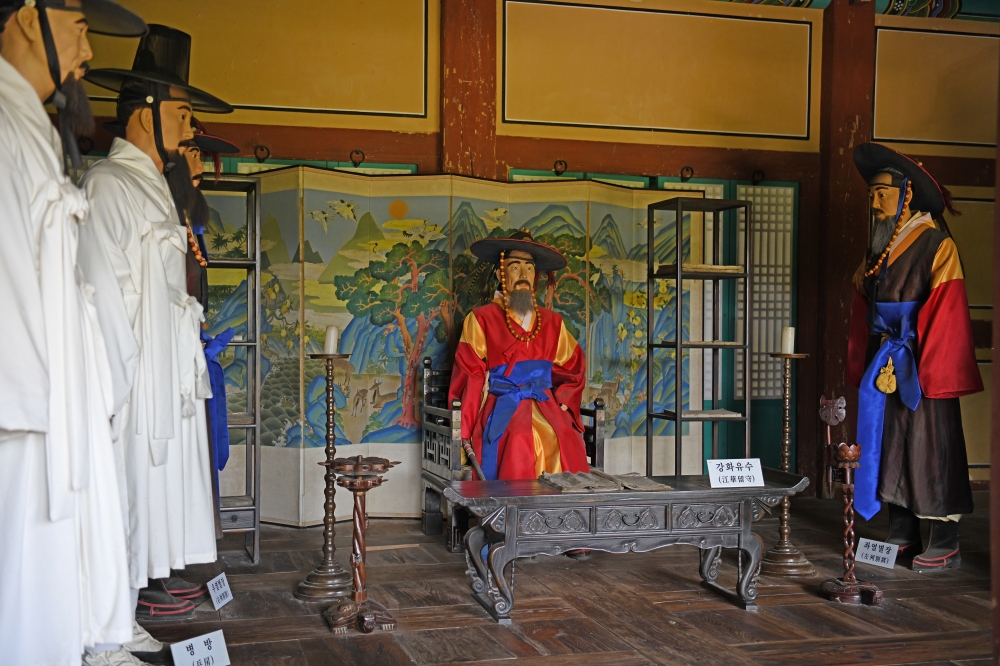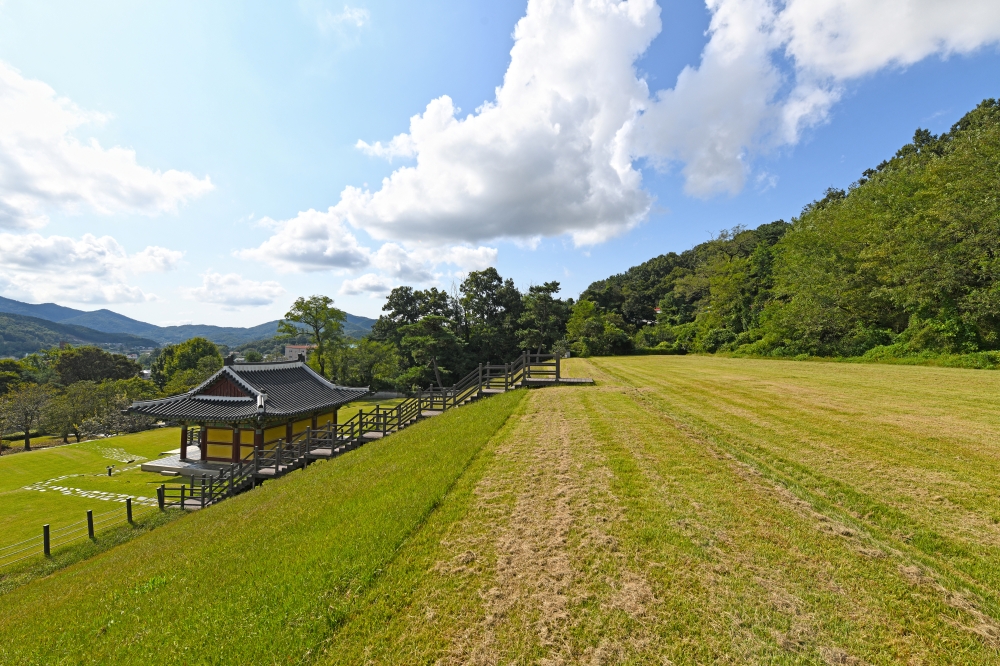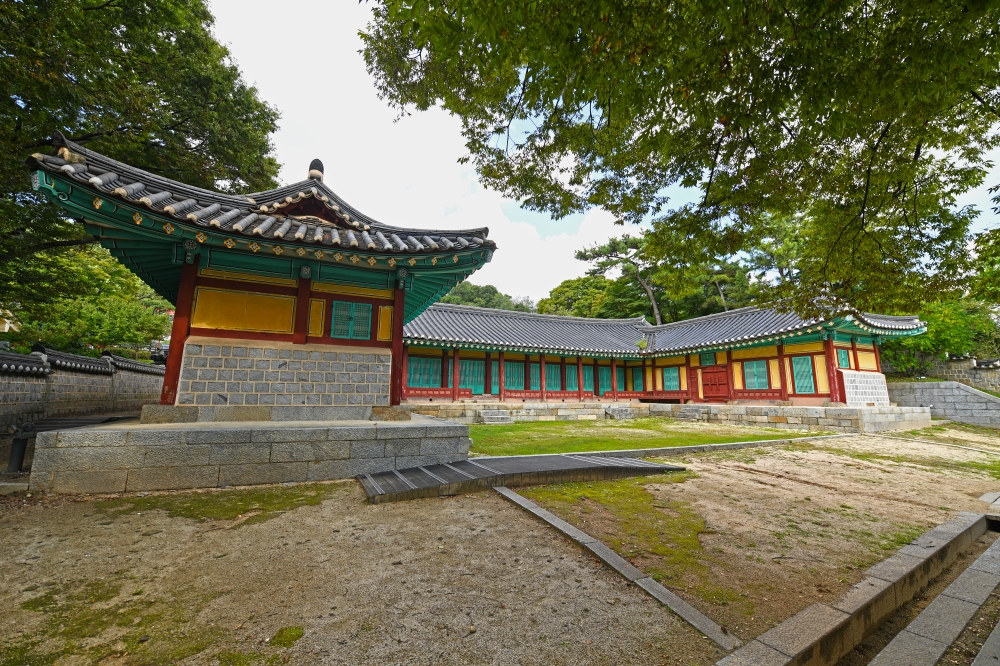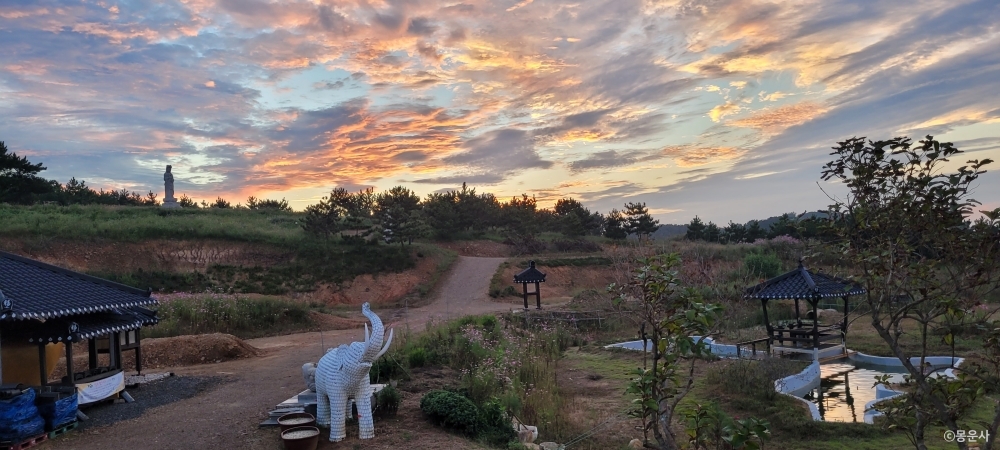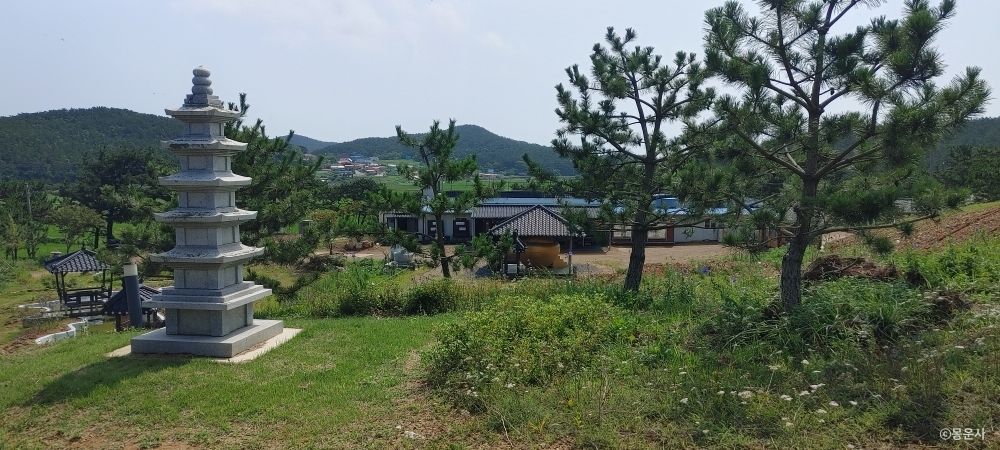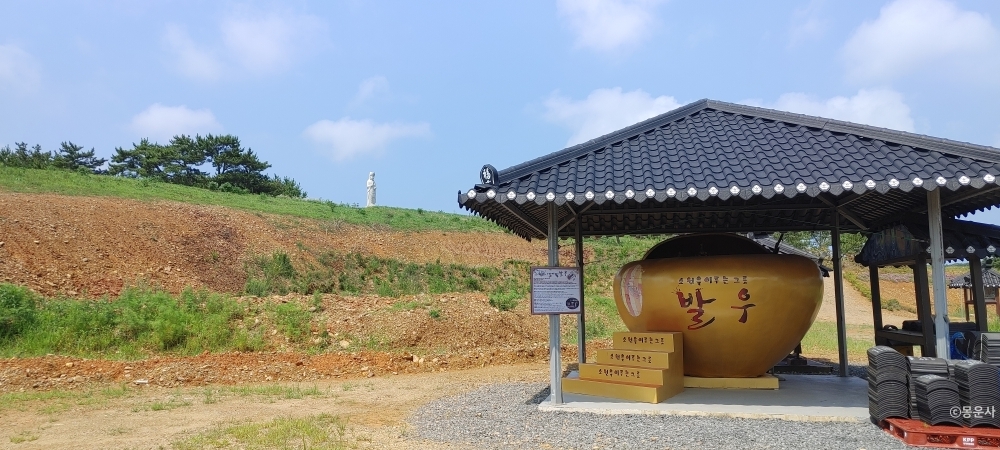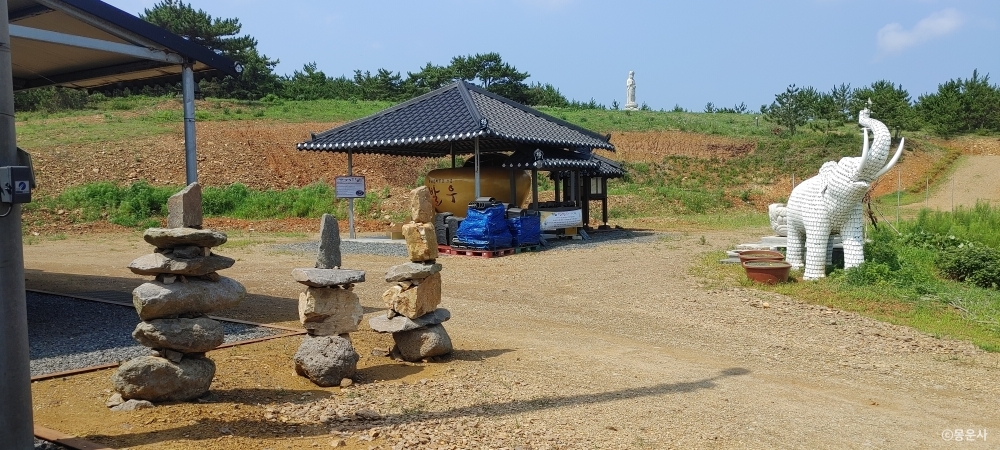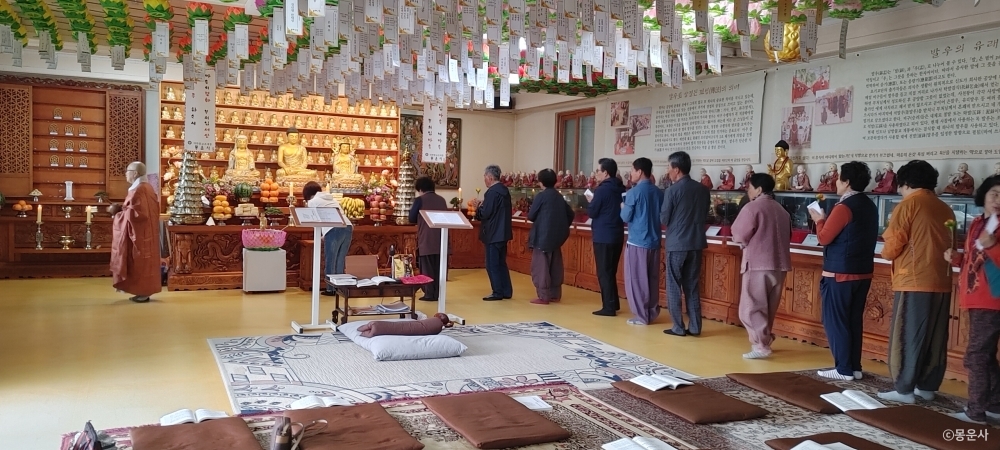Incheon pilgrimage trails connect the past with the present, blending history and culture.
Ganghwado Island, known as the “museum without a roof,” has witnessed many significant moments in Korean history, from prehistory to modern times.
As a result, various historic sites, such as the Dolmen Sites and Goryeogung Palace Site, remain preserved on the island.
Jeondeungsa Temple, the oldest temple in South Korea, is another integral part of Ganghwado’s heritage.
Its long history also has had a great influence on Mongunsa Temple, located on Baengnyeongdo Island, the northernmost island in the West Sea.
Where Ganghwado’s History Began: Ganghwa Dolmen Park
A dolmen is a prehistoric stone tomb. Korea has the largest number of dolmens in the world, with about 40 percent of the world’s dolmens located here.
Approximately 40,000 dolmens exist across North and South Korea, and 70 of them are situated on Ganghwado Island.
The area around Bugeun-ri, where Ganghwa Dolmen Park is located, boasts the greatest concentration of dolmens on the island, with 16 in total, including Korea’s renowned Ganghwa Jiseokmyo (Historic Site).
Ganghwa Jiseokmyo is a table-shaped dolmen supported by two upright stones and capped by a cover stone.
The cover stone is an impressive 7.1 meters long and weighs 75 tons.
Following the palm-matted trail from the Jiseokmyo leads you to 12 more dolmens in Bugeun-ri. It’s worth taking a slow walk to fully appreciate the historical significance.
Next to Ganghwa Dolmen Park, the Ganghwa History Museum exhibits prehistoric artifacts such as hand axes, stone arrowheads, and crescent-shaped stone knives, all excavated from Ganghwado Island.
Additionally, a diorama showcases the process of constructing dolmens.
The admission ticket for the Ganghwa History Museum also grants access to the Ganghwa Natural History Museum.
- Address994-12 Ganghwa-daero, Hajeom-myeon, Ganghwa-gun, Incheon
- Inquiries82-32-934-7887 (Ganghwa History Museum)
- Opening HoursOpen year-round
A Thousand-Year-Old Temple Embracing Autumn: Jeondeungsa Temple
Jeondeungsa Temple, believed to have been founded by the Buddhist monk Ado during the 11th year of King Sosurim’s reign in the Goguryeo period, is the oldest temple in South Korea.
Located within Samnangseong Fortress, which is said to have been built by the three sons of Dangun,
the temple is also notable for not having an Iljumun Gate (One-Pillar Gate) or a Sacheonwangmun Gate (the Gate of Four Guardian Kings), which are common at most temples.
The name “Jeondeung” was given after Queen Consort Jeonghwa, the wife of King Chungnyeol, donated a jade lantern to the temple.
In addition to its Treasure-designated iron bell, Jeondeungsa offers many attractions.
One of the most fascinating is the Nanyeosang (statue of a naked woman),
which tells the story of the master builder in charge of constructing the Daeungbojeon Hall and a female tavern owner from a nearby village.
Under the eaves of Daeungbojeon, the figure of a naked woman is carved, crouching and supporting the structure.
Jeondeungsa is also renowned for its two 600-year-old ginkgo trees, which haven’t borne fruit for over 70 years, and for artist Lee Yeoung-sup’s Little Prince statue,
crafted using excavation carving techniques. After exploring the temple, visitors are encouraged to take a walk along the Samnangseong Fortress trail,
which stretches 3 kilometers and offers picturesque views of Ganghwa’s stunning autumn landscape.
Starting the walk from behind Jeongjoksago (one of the royal historical archives) is recommended. Another highlight of autumn at the temple is the red spider lilies, which bloom from mid-September.
- Address37-41 Jeondeungsa-ro, Ganghwa-gun, Incheon
- Inquiries+82-32-937-0125
- Opening Hours 00:00-24:00
- Websitewww.jeondeungsa.org
The Site Where a Goryeo King Resided for 39 years: Goryeogung Palace Site
The Goryeogung Palace Site is located below the northern gate of Ganghwasanseong Fortress.
In 1232, during the 19th year of King Gojong’s reign, the Goryeo royal family relocated their capital here to escape the Mongol invasions.
The royal family remained on Ganghwado Island for 39 years.
However, after peace was made with the Mongols, all the buildings on the island were burned down under the pretext of suppressing the Sambyeolcho militia, leaving no visible trace of the palace today.
At the Goryeogung Palace Site, several buildings still remain, including Myeongwiheon and Ibangcheong, administration offices from the period, as well as Oegyujanggak, a branch of the royal library.
Oegyujanggak was established during the reign of King Jeongjo of the Joseon dynasty to store royal books.
Unlike Gyujanggak, which was located inside the capital, Oegyujanggak was situated outside it, hence the name, meaning “Outer Gyujanggak”.
Oegyujanggak was built on Ganghwado Island because it was considered as a safe location after many wars.
Following the Later Jin invasion of Joseon, King Injo elevated Ganghwado from a Dohobu (local administrative district) to a Yusubu (a district with a strategic military focus), transforming it into a fortress city to prepare for future invasions.
During the reign of King Sukjong, the foundation was laid for a coastal defense system consisting of strongholds, forts, and outposts.
Ganghwado Island has five strongholds, seven forts, and 53 outposts for coastal defense.
The Oegyujanggak, located at the center of the Goryeogung Palace Site, was destroyed by the French army during the Byeonginyangyo (French Campaign against Korea) but was restored in 2003.
- Address394 Ganghwa-daero, Ganghwa-eup, Ganghwa-gun, Incheon
- Inquiries+82-32-930-7078
- Opening Hours09:00~18:00
A 200-Year-Old Buddhist Temple of Filial Piety Standing in a Buddhist-Barren Landscape: Mongunsa Temple
Mongunsa Temple is a small temple located on Baengnyeongdo Island, the northernmost island in the West Sea.
Established in 2002 to commemorate peace between the two Koreas and the filial piety of Simcheong, it is the first temple built on the island in 200 years,
which had been without a household shrine for centuries.
The name “Mongun” is inspired by the story of Simcheongjeon, the tale of the filial daughter Simcheong, whose blind father promised a monk from Mongunsa Temple 300 bags of rice as an offering to Buddha.
The entrance to the temple is marked with the inscription “House of Filial Piety.”
Near the temple stands a giant bowl, and atop the hill, there is a five-story stone pagoda and the statue of Haesugwaneumsang (statute of sea-looking Avalokitesvara).
The statue, which looks over Jangsangot Cape toward Pyeongyang in North Korea, stands 9 meters high and weighs 25 tons.
Starting in 1991, the National Research Institute of Cultural Heritage conducted a ten-year investigation of cultural heritage sites within military protection zones,
during which they discovered the Yeonhwa-ri Temple Site on Baengnyeongdo Island. In addition,
an excavation team from Dongguk University unearthed a guardian Buddha relic believed to date back to the Unified Silla period.
Another unique feature of Mongunsa Temple is the peacocks grazing in the courtyard, adding to the temple’s charm.
- Address1842-5 Jinchol-ri, Baengnyeong-myeon, Ongjin-gun, Incheon
- Inquiries+82-32-836-0108
- Opening Hours00:00~24:00
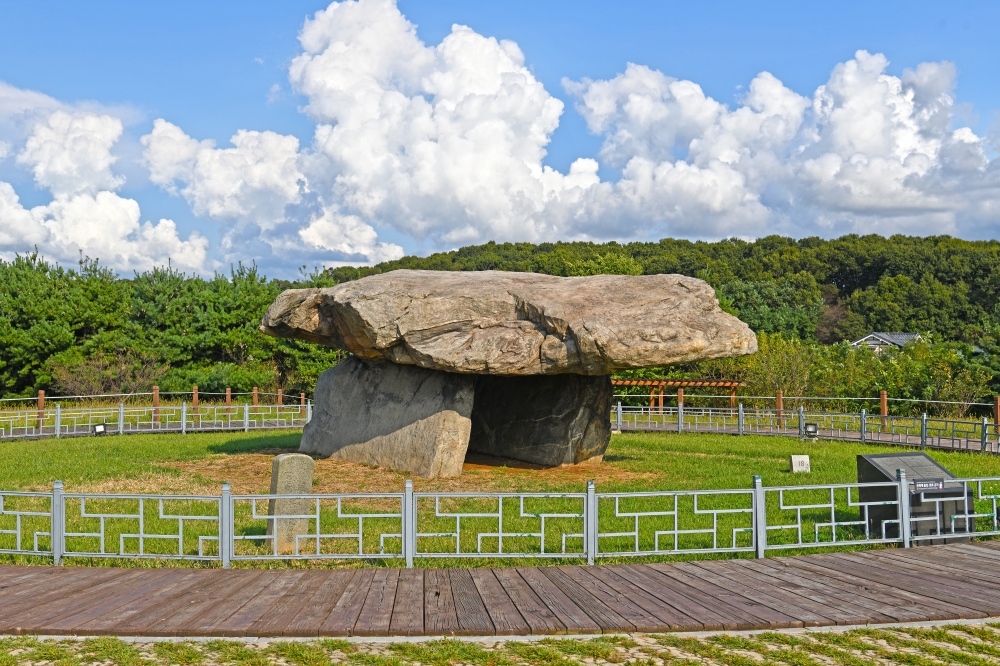

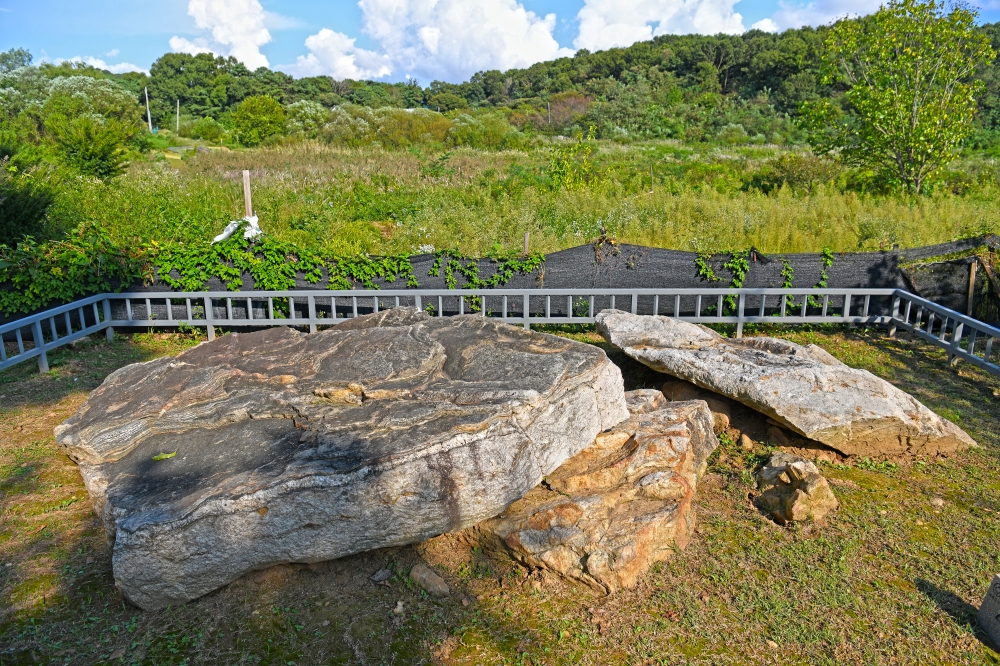

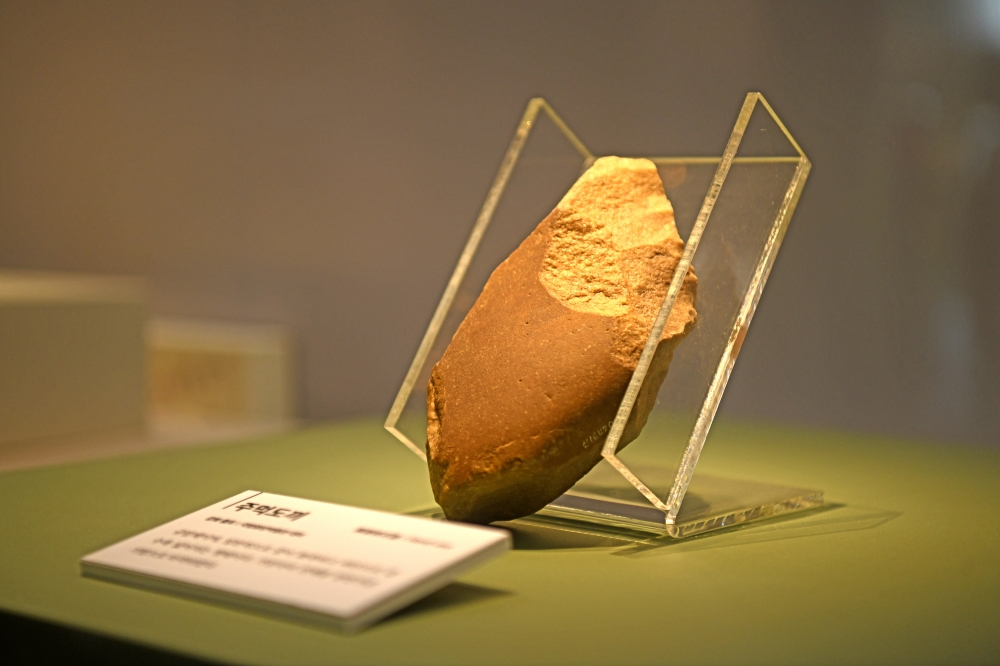
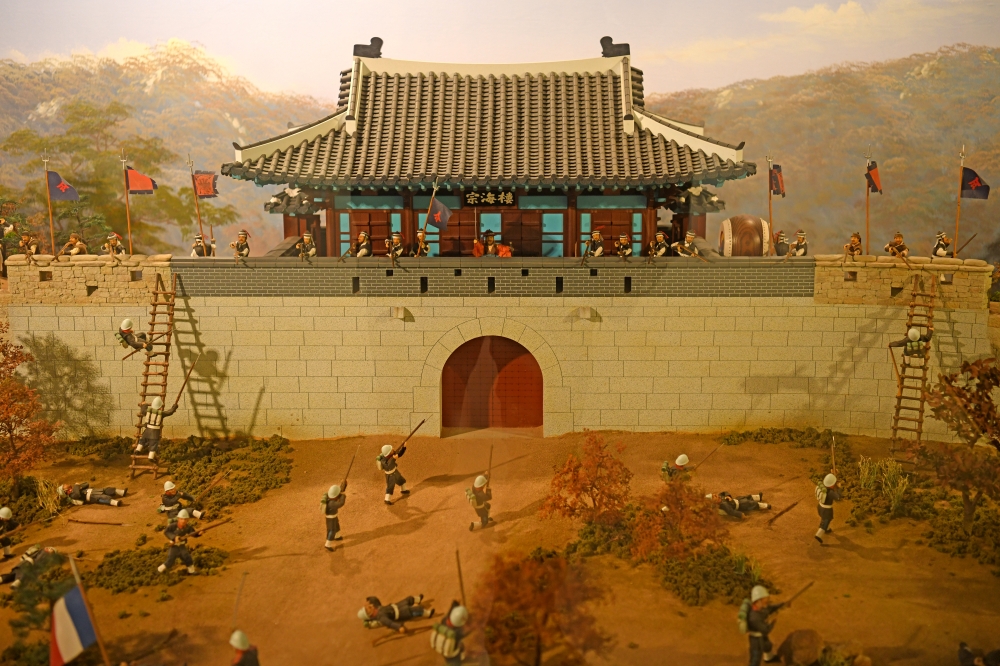



 442
442


